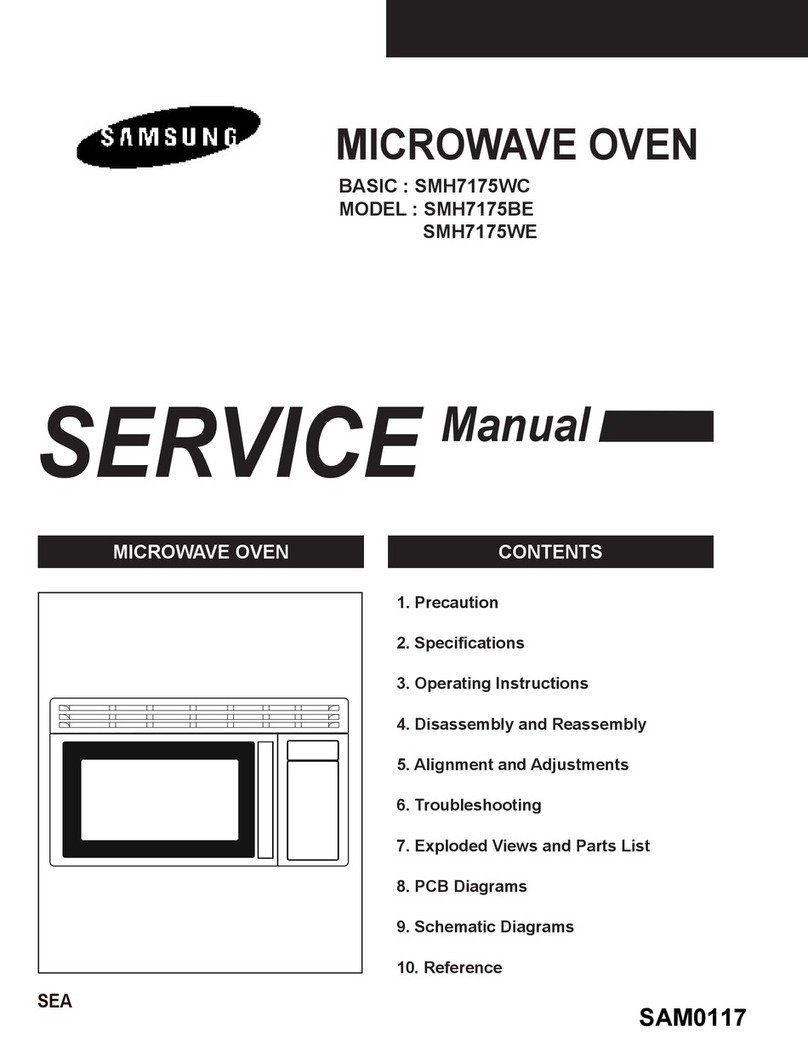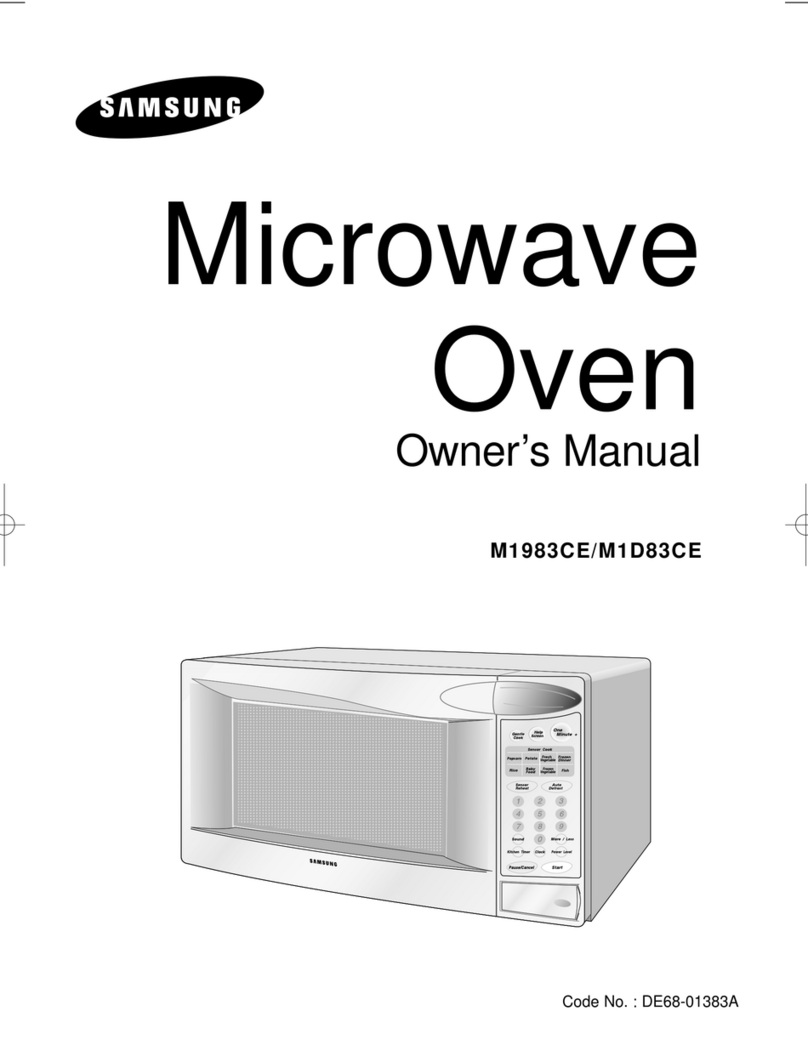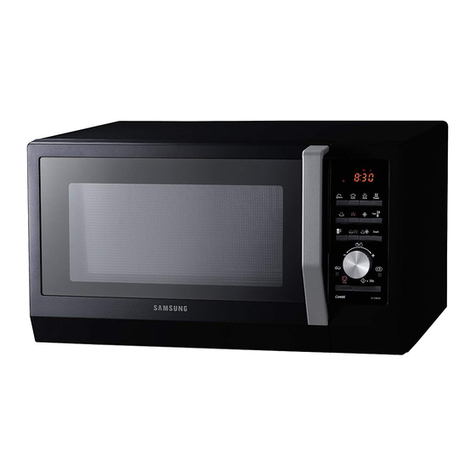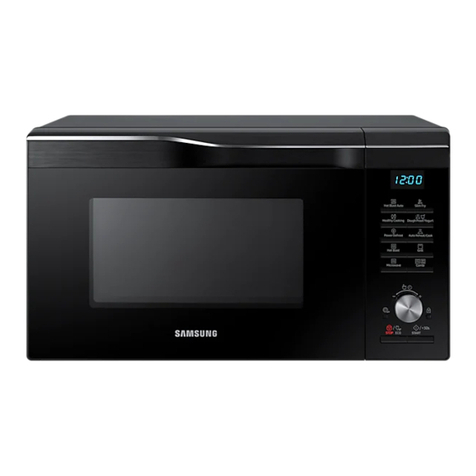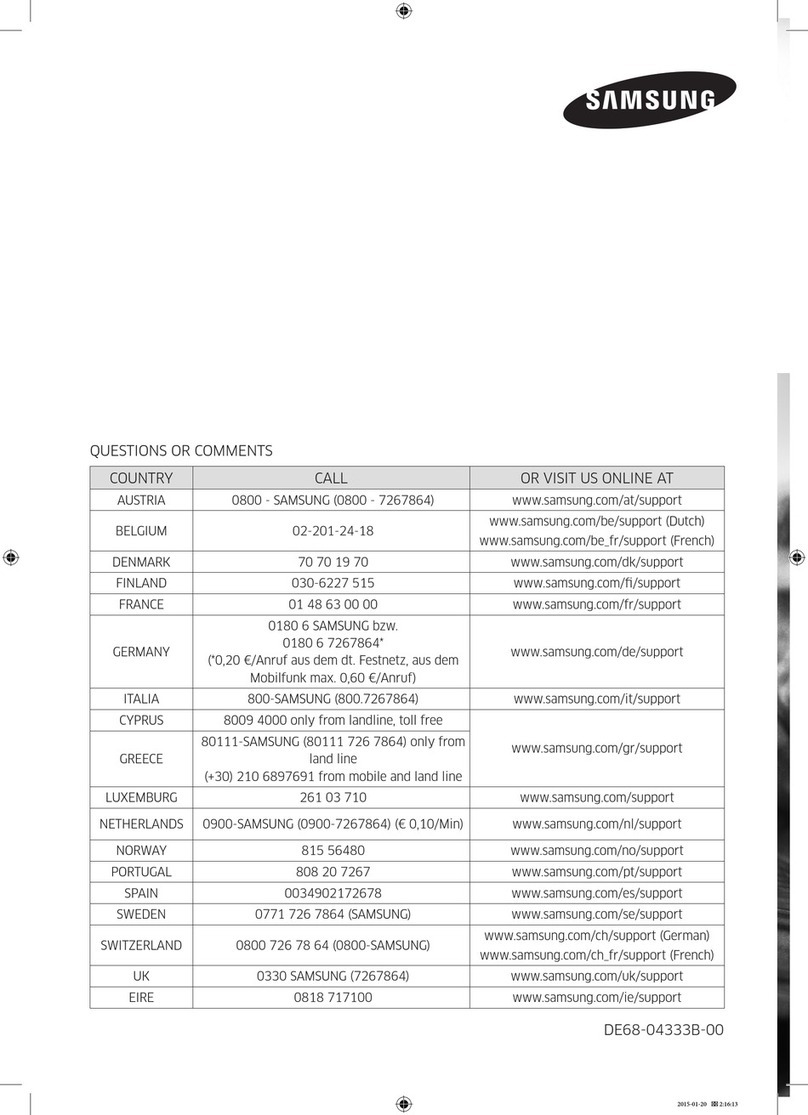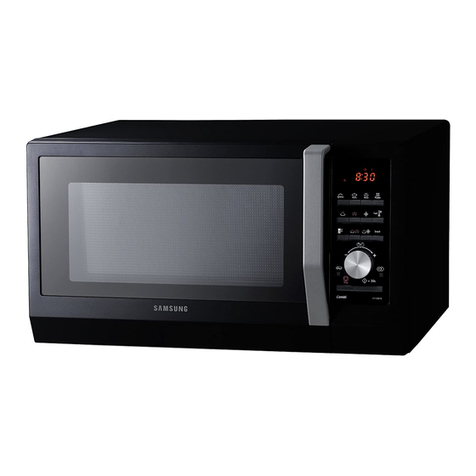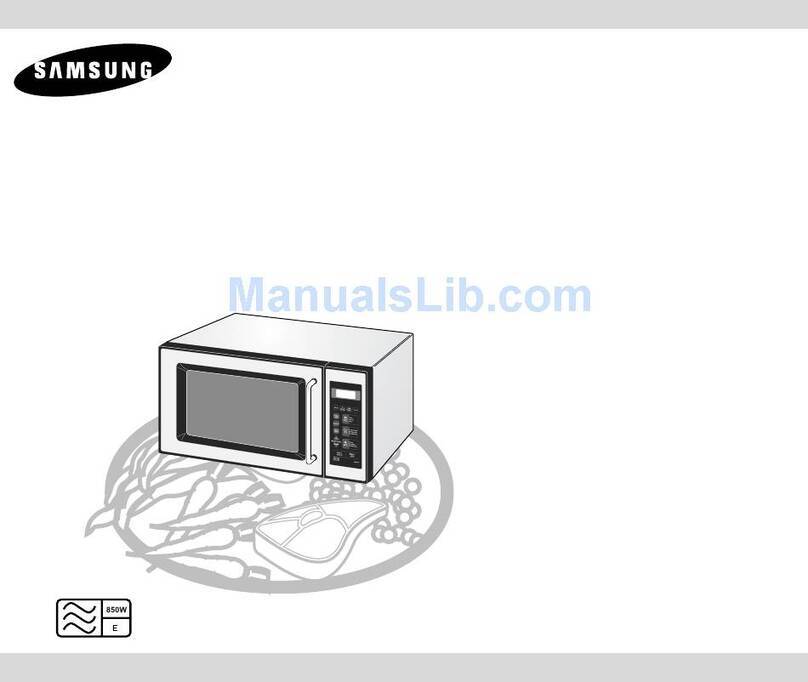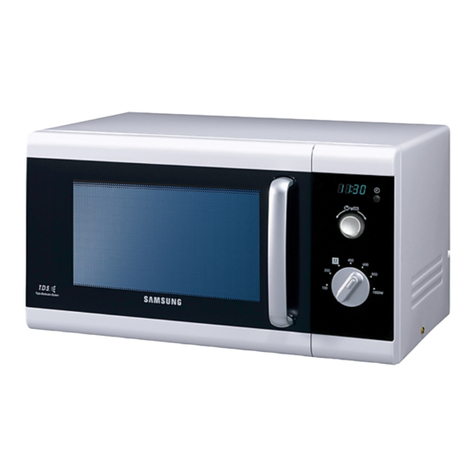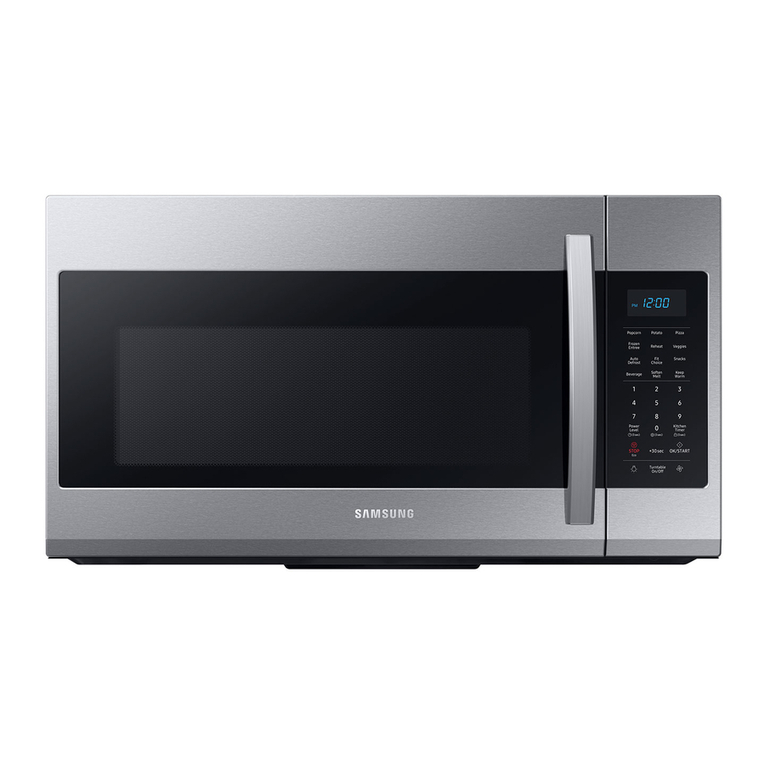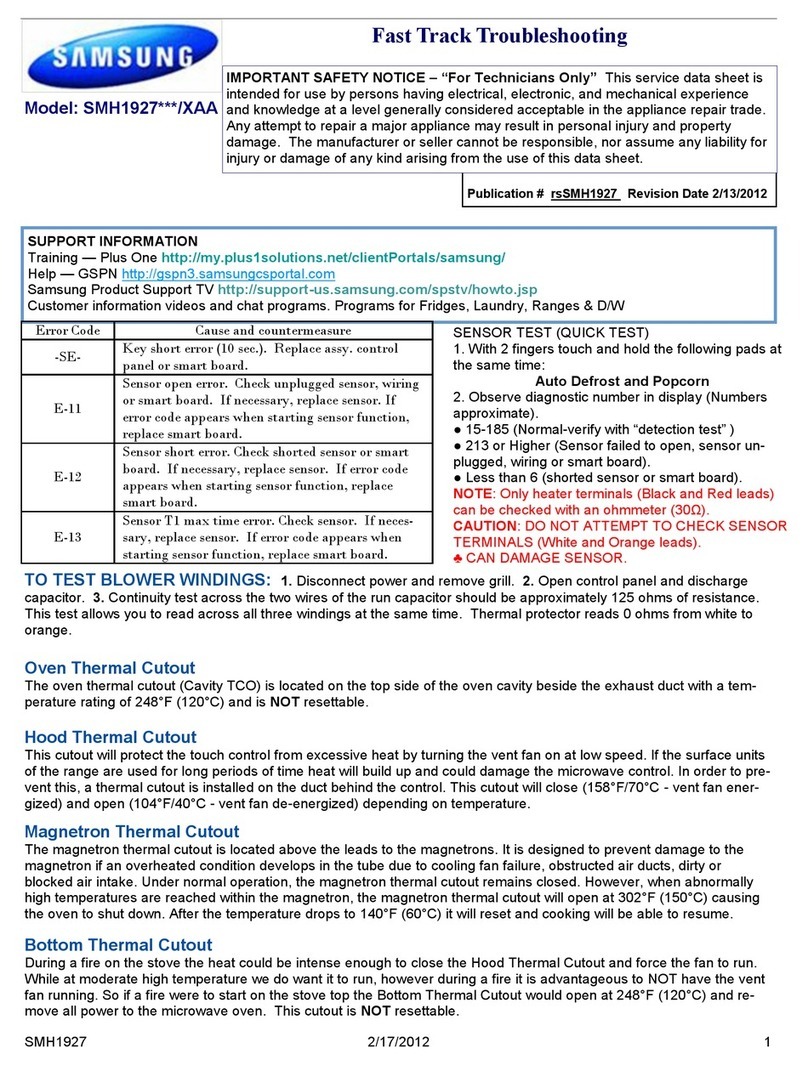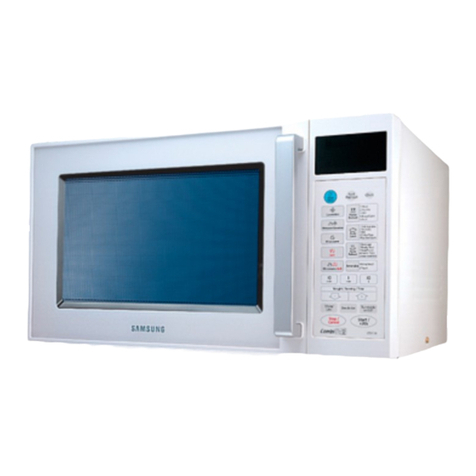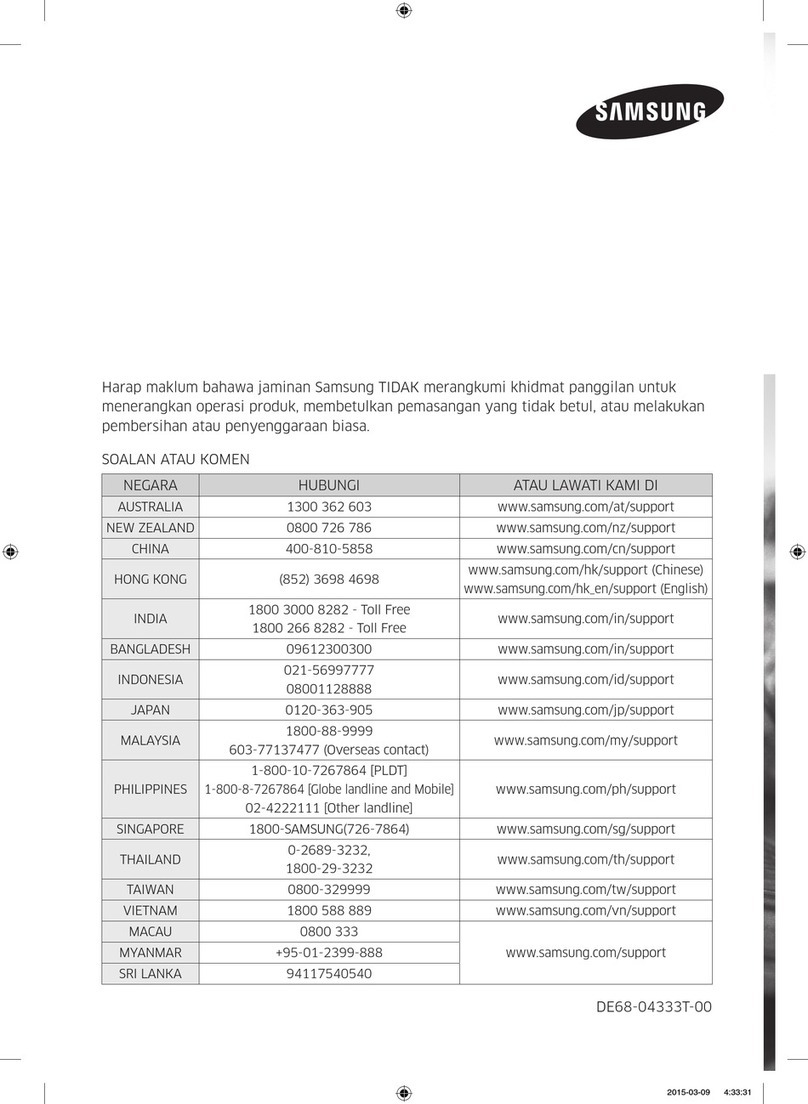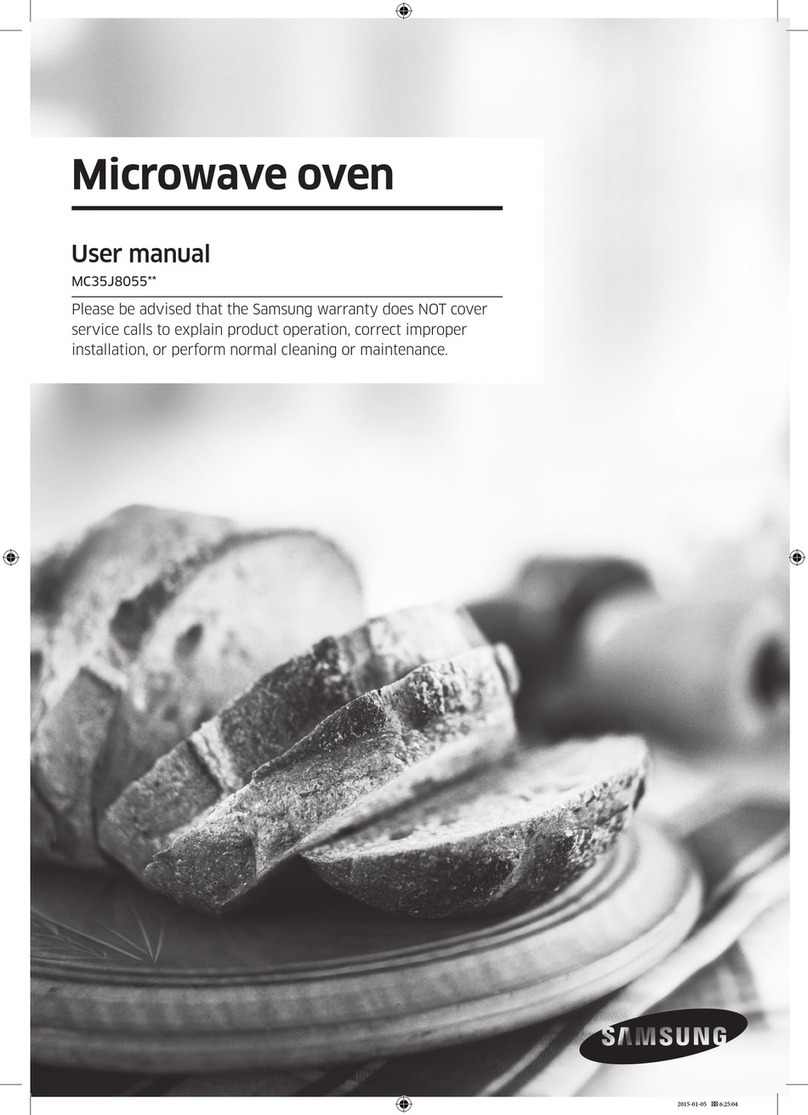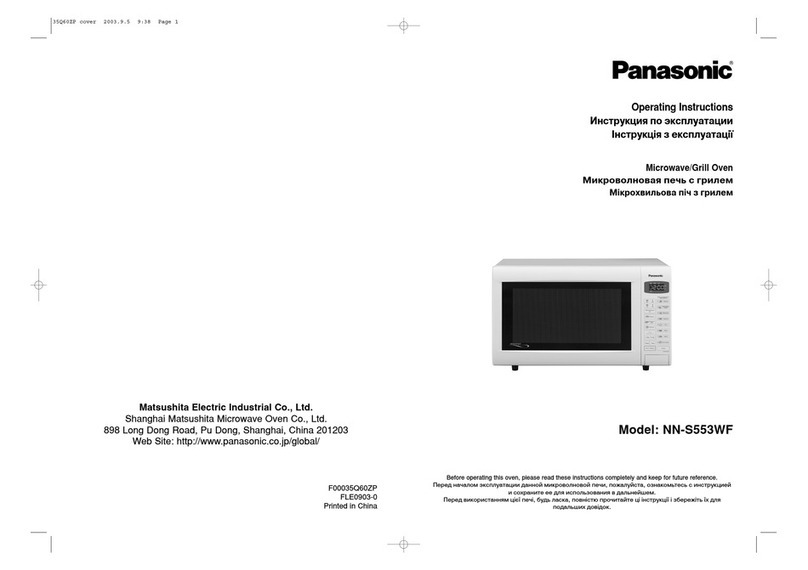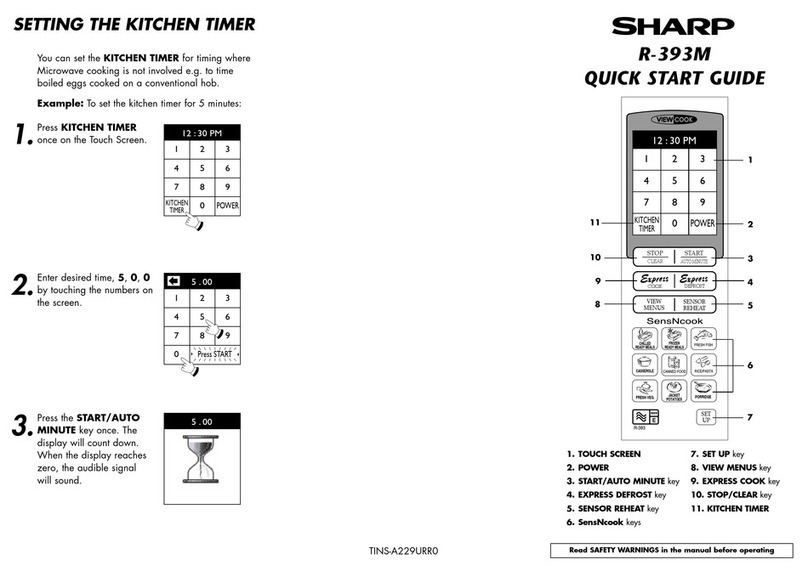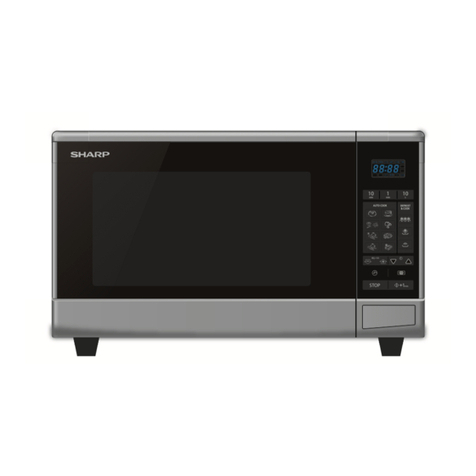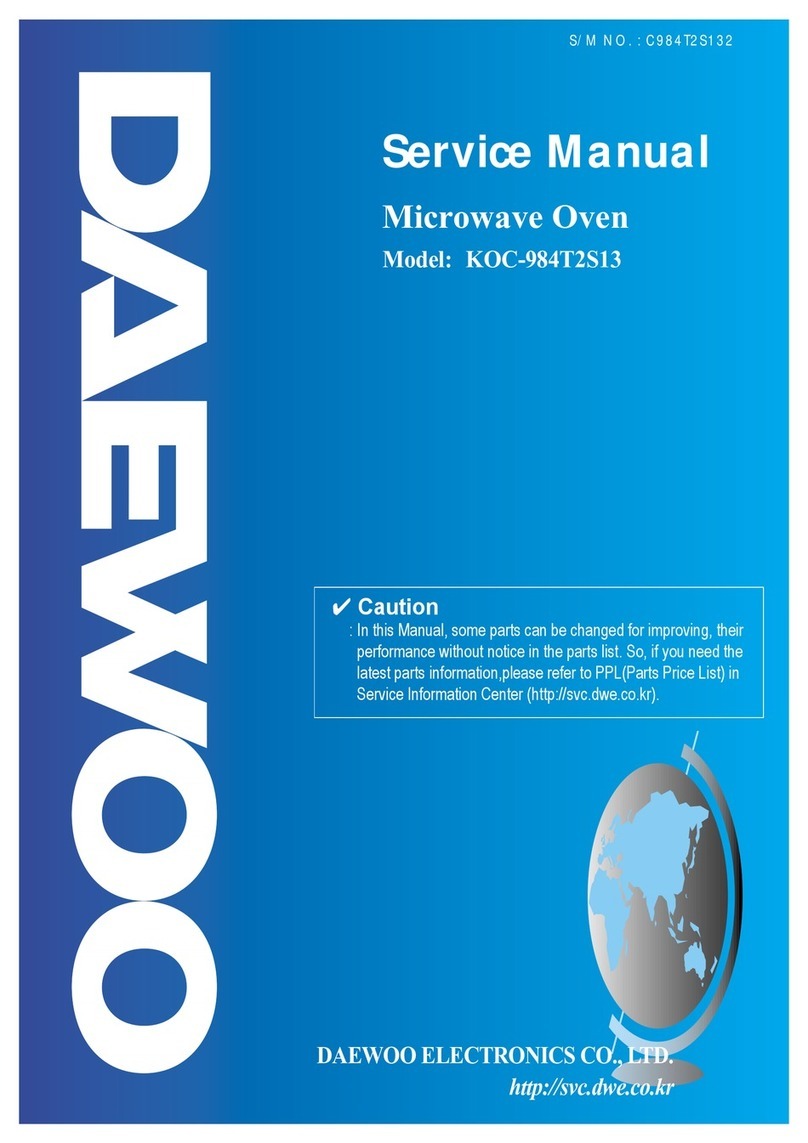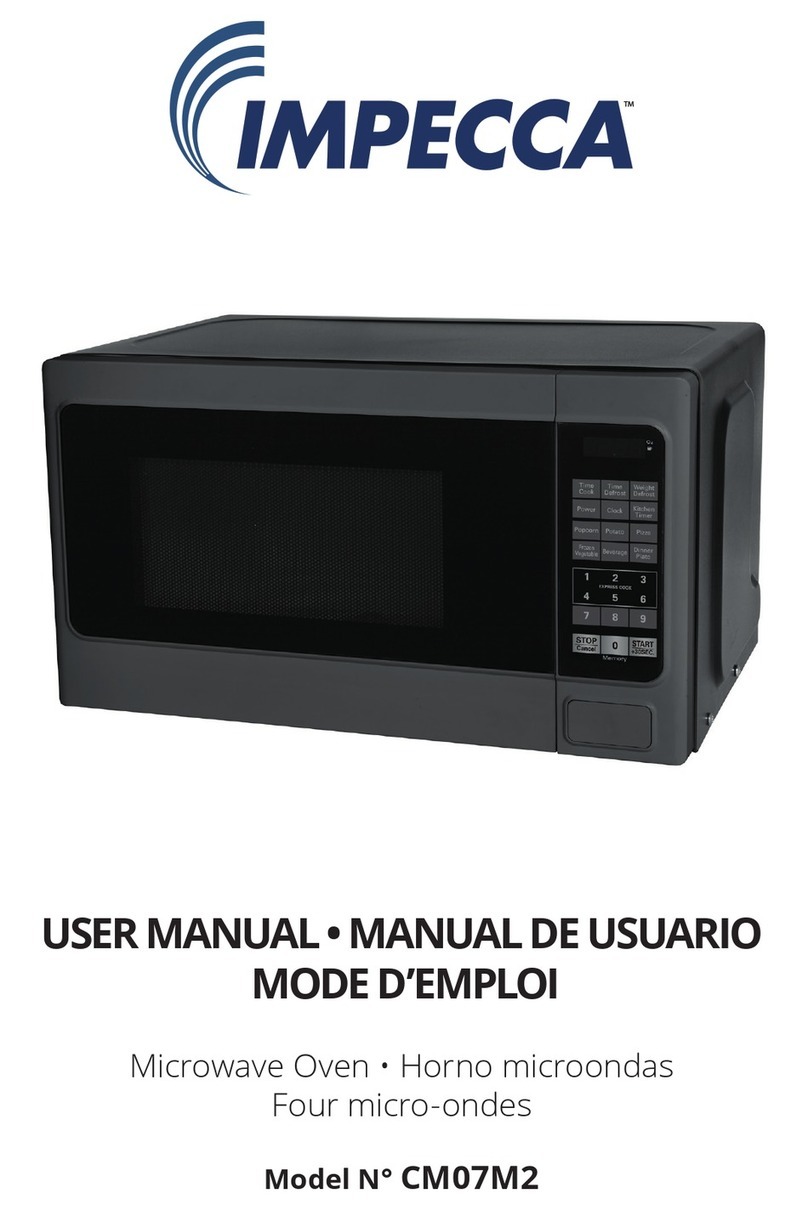
- 1 -
1. Precaution
Follow these special safety precautions. Although the microwave oven is completely safe during ordinary use,
repair work can be extremely hazardous due to possible exposure to microwave radiation, as well as potentially
lethal high voltages and currents.
1. All repairs should be done in accordance with the
procedures described in this manual. This product
complies with Federal Performance Standard 21
CFR Subchapter J(DHHS).
2. Microwave emission check should be performed to
prior to servicing if the oven is operative.
3. If the oven operates with the door open :
Instruct the user not to operate the oven and con-
tact the manufacturer and the center for devices
and radiological health immediately.
4. Notify the Central Service Center if the microwave
leakage exceeds 5 mW/cm2.
5. Check all grounds.
6. Do not power the MWO from a “2-prong” AC cord.
Be sure that all of the built-in protective devices are
replaced. Restore any missing protective shields.
7. When reinstalling the chassis and its assemblies,
be sure to restore all protective devices, including:
nonmetallic control knobs and compartment covers.
8. Make sure that there are no cabinet openings
through which people --particularly children --might
insert objects and contact dangerous voltages.
Examples: Lamp hole, ventilation slots.
9. Inform the manufacturer of any oven found to have
emission in excess of 5 mW/cm2, Make repairs to
bring the unit into compliance at no cost to owner
and try to determine cause.
Instruct owner not to use oven until it has been
brought into compliance.
CENTRAL SERVICE CENTER
10. Service technicians should remove their watches
while repairing an MWO.
11. To avoid any possible radiation hazard, replace
parts in accordance with the wiring diagram. Also,
use only the exact replacements for the following
parts: Primary and secondary interlock switches,
interlock monitor switch.
12. If the fuse is blown by the Interlock Monitor Switch:
Replace all of the following at the same time: Pri-
mary, door sensing switch and power relay, as well
as the Interlock Monitor Switch. The correct adjust-
ment of these switches is described elsewhere in
this manual. Make sure that the fuse has the cor-
rect rating for the particular model being repaired.
13. Design Alteration Warning:
Use exact replacement parts only, i.e., only those
that are specified in the drawings and parts lists
of this manual. This is especially important for the
Interlock switches, described above.
Never alter or add to the mechanical or electri-
cal design of the MWO. Any design changes or
additions will void the manufacturer’s warranty.
Always unplug the unit’s AC power cord from the
AC power source before attempting to remove or
reinstall any component or assembly.
14. Never defeat any of the B+ voltage interlocks.
Do not apply AC power to the unit (or any of its
assemblies) unless all solid-state heat sinks are
correctly installed.
15. Some semiconductor (“solid state”) devices are
easily damaged by static electricity. Such compo-
nents are called Electrostatically Sensitive Devices
(ESDs). Examples include integrated circuits and
field-effect transistors.
Immediately before handling any semiconductor
components or assemblies, drain the electrostatic
charge from your body by touching a known earth
ground.
16. Always connect a test instrument’s ground lead to
the instrument chassis ground before connecting
the positive lead; always remove the instrument’s
ground lead last.
1-1 Safety precautions ( )
